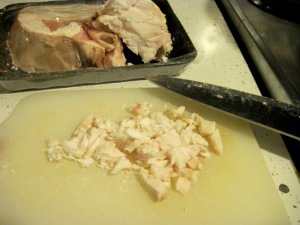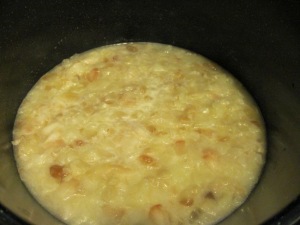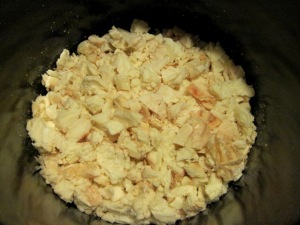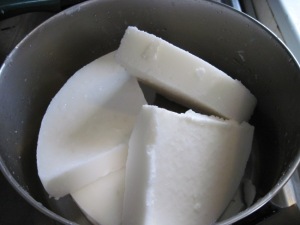In any reasonably sized town one generally has one’s choice of supermarkets. Mine has three worth speaking of:
The upscale “Market,” where people buy quinoa and sushi rice. I like to shop here between midnight and 4 a.m., because the patrons, most of whom have 9 to 5 jobs, are generally asleep or at Ivy League frat parties at that point. This is a good place to shop if you need dragon fruit or essential oil, but avoid it if you’re allergic to natural fabric or palpable smugness.
The People’s Supermarket, where normal people shop. The radio will play country hits, the vegetables will not be organic, but the lines will be shorter. I do most of my shopping here because I used to work the deli counter at The People’s Supermarket, and I like to remind myself how far I’ve come up in the world. (“But Sei, I thought you said you were unemployed!” Yes, and you’ve obviously never worked a deli counter in a supermarket.)
And there’s Aldis.
There’s also the shady supermarket, who’s shopping carts are generally an amalgam of carts from other stores, and where the asbestos in the ceiling is the only thing keeping pooling rainwater from dripping into the shriveled lettuce. Of this I will say no more.
Now, I may have mentioned that I love food, and as it happens I also love shopping for food, and I particularly like shopping for new and exciting food. Not always good tasting food, but certainly new. (Which is why I often end the week with a pound of chicken liver, a can of kippers, and a jar of water chestnuts, but nothing else. It’s like an episode of Chopped, the difference being that the people on Chopped are professional chefs and I am just unreasonably optimistic.) So I was rummaging around behind the veggie burgers when I discovered a stack of frozen beef suet.
“Aha!” I said to myself. “‘Rendering beef suet.’ That’s a phrase I’ve heard! I should do that.”
So I did, and it was kind of gross.

Also, to be authentic, I didn’t use a tripod to take these pictures. They didn’t have tripods for their digital cameras in The Olden Days!
First I chopped up the suet into chunks. All the online tutorials said it would melt down faster if I ground it up in a food processor, but I like to do things the old fashioned way because I’m a moron. (Seriously, I spent all summer pushing tomatoes through a sieve BY HAND with a spoon, instead of just blending them in the freaking blender like a normal, functioning human.) It chopped up very satisfyingly, although there was some weird stuff in there. Like, some papery, cellophane-y stuff that made a crinkling sound wrapped around everything, and some vessels and whatnot. Maybe some cartilage? I don’t even know. All the tutorials said “kidney fat” is the best, but I don’t think I’d know a kidney if you slapped me in the face with one, let alone kidney fat. The label just said “frozen beef suet.”
(It’s worth noting here that yes, I DID pass Biology class, thank you very much, so shut up. Cows are hard.)
The next step was to add water and a couple spoonfuls of salt, and then simmer the fat until it melted. All the tutorials said it would smell. It did. It smelled like how chicken bones smell when they come out of a stock. Kind of a… fatty smell. Waxy, fatty, faintly beefy. It’s the middle of winter, and we don’t have a range fan, so basically it was four hours of Eau de Beef Fat. Mr. Cloud Ring was not pleased.
Simmering took FOR-EVER. I really should have listened to everyone when they said to grind the fat, because it got to be about 10 at night and I was still in the kitchen, staring listlessly into a pot of semi-solid grease chunks. I SHOULD HAVE LISTENED.

Awesome prank: tell people you’re cooking soup and see if you can get them to stick their heads in the pot and take a big whiff.
But eventually it was more or less liquid, and I strained most of it through a sieve. (I saved the sieve, which was full of glop, thinking I would re-melt it later and get the rest out. Then I left it on the stove for days and it started to smell.) The oil floated to the top, and cooled to a solid white mass. It still kinda smelled. But hey! I rendered tallow! This tallow I’ll be using to make soap, because I don’t fancy the idea of rubbing it in my hair as a pomade. I also understand why tallow candles were for everyday and beeswax candles were for church, because burning that stuff has gotta be rank.
From The Art of Perfumery (G. W. Septimus Piesse, 1857):
The most important thing to consider in the manufacture of pomatum, &c., is to start off with a perfectly inodorous grease, whatever that grease may be. Inodorous lard is obtained thus:
Take, say 28 lbs. of perfectly fresh lard, place it in a well-glazed vessel, that can be submitted to the heat of a boiling salt-water bath, or by steam under a slight pressure; when the lard is melted, add to it one ounce of powdered alum and two ounces of table salt; maintain the heat for some time, in fact till a scum rises, consisting in a great measure of coagulated proteine compounds, membrane, &c., which must be skimmed off; when the liquid grease appears of a uniform nature it is allowed to grow cold.
The lard is now to be washed. This is done in small portions at a time, and is a work of much labor, which, however, is amply repaid by the result. About a pound of the grease is now placed on a slate slab a little on the incline, a supply of good water being set to trickle over it; the surface of the grease is then constantly renewed by an operative working a muller over it, precisely as a color-maker grinds paints in oil. In this way the water removes any traces of alum or salt, also the last traces of nitrogenous matter. Finally, the grease, when the whole is washed in this way, is remelted, the heat being maintained enough to drive off any adhering water. When cold it is finished.
Although purifying grease in this way is troublesome, and takes a good deal of time, yet unless done so, it is totally unfit for perfuming with flowers, because a bad grease will cost more in perfume to cover its mal odeur than the expense of thus deodorizing it. Moreover, if lard be used that “smells of the pig,” it is next to impossible to impart to it any delicate odor; and if strongly perfumed by the addition of ottos, the unpurified grease will not keep, but quickly becomes rancid. Under any circumstances, therefore, grease that is not perfectly inodorous is a very expensive material to use in the manufacture of pomades.
Now here’s a little math: I bought my frozen suet for $6.50. I got two and a half pounds of tallow. That’s $2.60 a pound. A pound of olive oil out of my giant, restaurant-sized gallon is about $3.80, so tallow is actually cheaper, although you have to take into account prep time versus just pouring it out of a can. You can get a quart of pre-rendered tallow from a soap making supplier for about $7.50, which, while it may be less smelly, is also more expensive. You can also buy lard in blocks for cheap, but lard is Satan’s Grease, so, you know… FYI.


M-m
I sure learned something from this absolutely riveting explanation of how to render beef suet. NEVER DO IT!
Sei Paulson
Aw, it’s not that bad. Cleanup was a bitch, though.
Sei Paulson
It wasn’t a strong smell, but it was pervasive. It made me FEEL greasy.
I’m told you can get beef fat from the butcher’s for free, but I haven’t tried it yet. Free would definitely make the effort worth it.
Mr. MTISB
It wasn’t RANK it was just mildly gross and pervasive. Your pictures look great.
Sei Paulson
True, but we weren’t burning the stuff. I hear it gives off a dreadful smoke.
Mr. MTISB
We should try it.